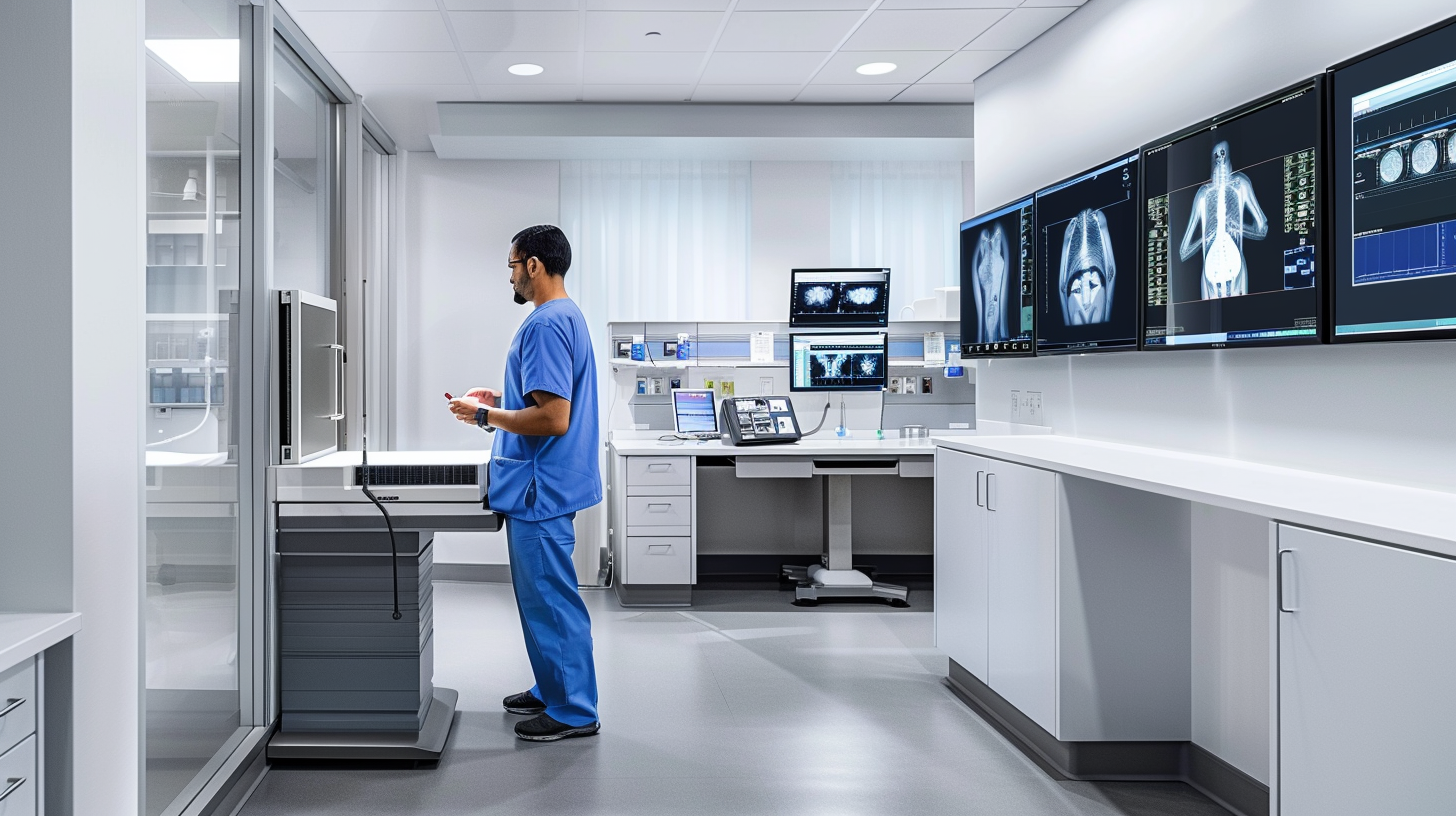Radiology plays a pivotal role in modern healthcare, enabling accurate diagnoses and treatment plans for patients. However, the radiology experience can sometimes be daunting and inefficient, leading to increased patient anxiety and longer waiting times. This is where Radiology Information Systems (RIS) come into play, revolutionizing patient care by streamlining workflows, improving communication, and enhancing data management. In this article, we will explore how RIS technology is transforming the radiology experience, ultimately leading to improved patient satisfaction and better outcomes.
Understanding Patient Engagement
One of the key pillars of patient-centric care is fostering engagement and empowerment. RIS systems are designed with the patient in mind, allowing for seamless interaction and communication throughout the radiology process. Patients can easily access their appointment schedules, view results, and communicate with their healthcare providers using secure online portals.
This level of transparency and connectivity not only puts patients at ease but also allows them to actively participate in their care journey. Empowered patients are more likely to adhere to follow-up recommendations and engage in shared decision-making with their healthcare team.
Moreover, patient engagement goes beyond just the technical aspects of accessing information online. It involves building a relationship of trust and collaboration between patients and healthcare providers. When patients feel heard and respected, they are more likely to take an active role in managing their health.
Healthcare organizations are increasingly recognizing the importance of patient engagement in improving outcomes and overall satisfaction. By involving patients in decision-making processes and treatment plans, healthcare providers can ensure that the care delivered is truly patient-centered and aligned with individual preferences and needs.
Key Features of Radiology Information Systems (RIS)
RIS technology encompasses a wide array of features that significantly enhance the radiology experience. Let's delve into some of the key functionalities:
Patient Scheduling and Registration
Gone are the days of long phone calls and endless paperwork to schedule radiology appointments. With RIS, patients can easily book their appointments online, select convenient time slots, and even receive automated reminders. Streamlining the scheduling and registration process saves time for both patients and staff, reducing wait times and increasing overall efficiency.
Streamlining Workflow and Reducing Wait Times
Efficiency is at the core of RIS, transforming radiology practices into well-oiled machines. RIS systems automate various tasks such as patient tracking, result reporting, and image management, minimizing human error and ensuring seamless workflows. By optimizing resource allocation and reducing bottlenecks, RIS technology helps radiology departments deliver timely results and reduce wait times for patients.
Improving Image and Data Management
Radiology generates vast amounts of data, including images, reports, and patient records. RIS systems provide robust image and data management capabilities, enabling easy access, storage, and retrieval of critical information. Additionally, RIS integrates with Picture Archiving and Communication Systems(PACS), facilitating the efficient sharing and interpretation of medical images between radiologists and healthcare providers.
Moreover, RIS technology goes beyond just managing images and data. It also offers advanced tools for image analysis and processing. These tools allow radiologists to enhance the quality of images, adjust contrast and brightness, and even perform measurements and annotations directly on the images. This level of image manipulation not only aids in accurate diagnosis but also improves communication between radiologists and other healthcare professionals.
Furthermore, RIS systems often include built-in reporting features that enable radiologists to generate comprehensive and standardized reports. These reports can be customized to include specific information such as clinical findings, recommendations, and follow-up instructions. With the ability to generate reports quickly and efficiently, radiologists can provide timely and detailed information to referring physicians, ensuring continuity of care and facilitating informed decision-making.
Ensuring Patient Safety and Data Security
When it comes to healthcare technology, patient safety and data security are paramount. RIS platforms adhere to stringent regulatory standards and employ robust security measures to protect patient information. The use of secure online portals and encrypted communication channels ensures that sensitive data remains confidential and inaccessible to unauthorized individuals. This instills trust in patients, reinforcing their confidence in the radiology process.
Moreover, in the realm of patient safety, RIS platforms play a crucial role in minimizing errors and enhancing the quality of care. By automating processes such as appointment scheduling, result reporting, and image sharing, these systems reduce the likelihood of human error and ensure that patients receive timely and accurate diagnoses. This streamlined approach not only improves efficiency within radiology departments but also enhances the overall patient experience, leading to better health outcomes.
Furthermore, the integration of artificial intelligence (AI) algorithms within RIS platforms has revolutionized the field of radiology. AI-powered tools can analyze medical images with unprecedented speed and accuracy, assisting radiologists in detecting abnormalities and making more precise diagnoses. This advanced technology not only enhances diagnostic capabilities but also helps healthcare providers tailor treatment plans to individual patient needs, ultimately improving patient outcomes and advancing the standard of care in radiology.
Enhancing Communication Between Radiologists and Physicians
Effective communication is pivotal for accurate diagnoses and seamless care coordination. RIS facilitates seamless communication channels, allowing radiologists and referring physicians to exchange messages, share critical findings, and collaborate in real-time. This enhances the accuracy and efficiency of reporting and ensures that patients receive timely and appropriate interventions.
Furthermore, the integration of speech recognition technology within RIS systems has revolutionized the way radiologists interact with patient data. By utilizing voice commands, radiologists can dictate their findings directly into the system, significantly reducing the time spent on manual data entry. This not only streamlines the reporting process but also minimizes the risk of transcription errors, ultimately improving the overall quality of patient care.
Moreover, the latest advancements in RIS software now include artificial intelligence algorithms that can assist radiologists in detecting abnormalities and flagging potential areas of concern. This augmented decision-making capability not only enhances the accuracy of diagnoses but also serves as a valuable second opinion, ensuring that no critical findings are overlooked. By leveraging these cutting-edge technologies, radiologists and physicians can collaborate more effectively, leading to improved patient outcomes and a higher standard of care.
Facilitating Accurate and Efficient Reporting
Accurate and comprehensive reports are essential in radiology, guiding treatment decisions and facilitating effective communication among healthcare providers. RIS systems provide radiologists with user-friendly interfaces for report generation, ensuring standardized formatting and accurate documentation of findings. Advanced reporting modules in RIS platforms automate the creation of standardized reports, reducing manual effort and improving report accuracy.
Moreover, these RIS systems often come equipped with speech recognition technology, allowing radiologists to dictate their findings directly into the system. This not only saves time but also minimizes the risk of errors that can occur during manual data entry. The integration of speech recognition technology has revolutionized the reporting process, enabling radiologists to generate reports efficiently and accurately.
Furthermore, RIS platforms offer customizable templates that can be tailored to specific imaging modalities and clinical scenarios. Radiologists can choose from a variety of templates that are pre-populated with common phrases and terminology, streamlining the reporting process. By utilizing these templates, radiologists can ensure consistency in reporting style and content, ultimately enhancing the overall quality of radiology reports.
Integrating RIS with Other Health Information Systems
Radiology is just one piece of the intricate healthcare puzzle. To deliver holistic and seamless care, RIS platforms seamlessly integrate with other health information systems, such as Electronic Health Records (EHR) and Hospital Information Systems (HIS). This interoperability enables efficient data exchange, eliminates duplicate data entry, and provides a comprehensive view of the patient's medical history. Such integration ensures continuity of care and prevents fragmented healthcare experiences.
Moreover, the integration of RIS with EHR systems allows radiologists to access a patient's complete medical record, including past imaging studies, lab results, and clinical notes. This comprehensive view enhances diagnostic accuracy and treatment planning, leading to better patient outcomes. Additionally, the seamless flow of information between RIS and EHR systems streamlines administrative tasks, such as scheduling appointments, billing, and reporting, improving operational efficiency within radiology departments.
Furthermore, the interoperability between RIS and HIS systems plays a crucial role in enhancing communication and collaboration among healthcare providers. By sharing real-time data on patient care, treatment plans, and test results, different departments within a healthcare facility can work cohesively to deliver coordinated care. This integration also facilitates the tracking of imaging orders, reduces turnaround times for reporting, and enhances overall patient satisfaction by ensuring timely and accurate delivery of radiology services.
The Impact of RIS on Patient Satisfaction
Improved patient satisfaction is the ultimate goal of any healthcare innovation, and RIS has a profound impact on achieving this goal in radiology. By streamlining workflows, reducing wait times, and enhancing communication, RIS platforms enhance the overall patient experience. Patients feel more engaged, empowered, and informed throughout the radiology process, leading to increased satisfaction and trust in their healthcare providers.
RIS technology not only benefits patients but also significantly impacts healthcare providers and staff. With the implementation of RIS, radiology departments can experience increased efficiency in managing appointments, tracking patient records, and generating reports. This efficiency allows healthcare professionals to focus more on providing quality care to patients, ultimately leading to improved outcomes and higher patient satisfaction rates.
Furthermore, the integration of RIS with other healthcare systems, such as Electronic Health Records (EHR), enables seamless data sharing and collaboration among different departments. This interoperability enhances the continuity of care for patients, as their information can be easily accessed and updated by various healthcare providers involved in their treatment. Additionally, the data analytics capabilities of RIS provide valuable insights that can drive quality improvement initiatives and enhance decision-making processes within radiology departments.
In conclusion, Radiology Information Systems (RIS) have revolutionized the radiology experience, offering a multitude of benefits that enhance patient care. From seamless scheduling and registration to streamlined workflows and accurate reporting, RIS technology improves efficiency, communication, and data management. By prioritizing patient engagement and satisfaction, RIS platforms play a key role in improving the overall quality of care in radiology and beyond.
Ready to elevate your radiology practice with the transformative power of a Radiology Information System? Discover how AbbaDox can unify your imaging center operations and optimize your radiology workflows, all in one cloud-based platform. Experience the scalability, flexibility, and simplicity that has made AbbaDox the choice for radiology centers seeking to enhance patient care and satisfaction. Don't wait to streamline your processes and improve outcomes. Meet with a product consultant today and take the first step towards a more efficient and patient-centered radiology experience.







